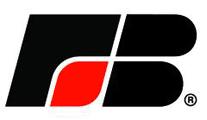 [5]By American Farm Bureau Federation [6]
[5]By American Farm Bureau Federation [6]
Drones: The Next Step in Precision Ag and Improved Sustainability
By Robert Giblin
Once a science fiction dream and then used extensively for military surveillance and warfare, small Unmanned Aerial Systems – commonly known as drones – are moving rapidly into daily business and consumer use and poised to become powerful tools for farmers. Drones could revolutionize precision agriculture and enable farmers to enhance yields and production, while profoundly contributing to reduced environmental impacts.
The evolution of drones strongly mirrors the early days of personal computers. At first, few people could dream of how computers would be incorporated into daily lives, how they would evolve and improve, or what future innovations would bring. Like personal computers, drones are an “enabling” technology that will foster innovation, jobs, and uses not yet imagined.
Farmers have long-relied on images from satellites and private planes to track crop progress, and manage water, fertilizer and pesticide use. But satellite and airplane photography is expensive, inflexible and out of reach for many farmers. Drones may offer farmers more accessibility and greater flexibility, at a lower cost. As drones become more available, they will become even cheaper, while providing higher-resolution field images, infrared photography and instant integration with other farm data technologies. Drones also have convenience on their side: They can be used on very short notice, as well as on farms adjacent to urban areas or in areas with flight restrictions.
The benefits are also not confined to crop fields either. Drones can be used by ranchers to observe grazing patterns, monitor predators, or find animals stranded in inclement weather. Similarly, environmental managers are already using drones to observe wildlife habitat, including endangered bird species.
Some of the most significant benefits of drones, however, may come through increased precision and contributions to sustainability. Precision agriculture has revolutionized American farming by allowing farmers to maximize yields while reducing water, fertilizer and pesticide use. Drones are the next step in this evolution. Farmers will be able to nimbly use drones to assess water, pesticide and fertilizer needs, and to identify and target pests, diseases, weeds and stress.
Farmers can get images and data within minutes to make more informed decisions about using resources. For example, drones may aid in early detection of plant diseases or insect problems in remote areas of fields, helping farmers accurately address such problems before they spread.
Farmers are eager to embrace drones, not only to reduce costs and increase yields, but also to help meet targets for sustainability and reducing environmental impact. A study conducted by the Association for Unmanned Vehicle Systems International concluded that among different types of businesses that will use drones, the commercial agriculture market is “by far the largest segment, dwarfing all others.” From 2015-2025, drone integration is expected to contribute $75.6 billion in economic impact by agriculture, compared to $3.2 billion by public safety and $3.2 billion by other activities. Another study, conducted by GRA, Inc., in cooperation with Booz Allen Hamilton, estimates that annual crop savings from using drones could reach more than $200 million by 2035.
The Federal Aviation Administration recently approved the first exemption of current rules to allow use of drones over crops for the purposes of spraying water, fertilizers, pesticides and herbicides. But the rules are still very strict. The exemption only allows drones to be flown in visual line-of-sight during daylight hours at a maximum altitude of 400 feet, and requires FAA-certified pilot training for the user, along with another person acting as a spotter. It also must be used under the direction, supervision and control of the manufacturer, which means that for now, drones can’t be purchased and used by most custom applicators or farmers.
While the stakes could not be higher, American agriculture still trails other countries – including Canada, the United Kingdom, France, Australia and Japan – in using drones, in part because of prohibitive regulations. American farmers and ranchers need performance-based standards so they can use drones themselves, round-the-clock, beyond visual line-of-site, and with other low-risk rules.
Technology is advancing rapidly, and the regulatory structure needs to advance as well. Farmers and ranchers need access to secure technology to unlock the potential for drones to improve precision, productivity and sustainability.
Robert Giblin writes, speaks and consults about agricultural and food industry issues, policies and trends.